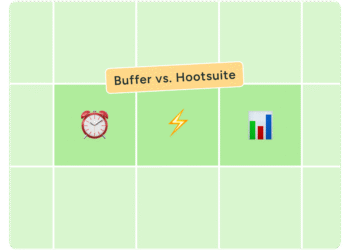If you’re a small or midsize business running multiple marketing channels, there’s a good chance your daily routine includes campaign planning, content creation, and opening 17 different browser tabs just to figure out if any of them are working. Sound familiar?
You’ll find that marketing analytics flood in from every direction, and marketing automation software fires content out just as fast. Without a real-time marketing dashboard or a unified marketing analytics tool, marketers are left making decisions based on disconnected data, siloed tools, and whatever metrics happen to be easiest to find. That’s why effective dashboarding and reporting tools have become the nerve center for data-driven marketing.
We’re Not Lacking Data, We’re Drowning in It
As William Bruce Cameron famously observed:
“Not everything that counts can be counted, and not everything that can be counted counts.”
A 2023 Gartner survey revealed that 76% of marketing leaders feel overwhelmed by the volume of data they receive, yet only 29% feel confident in using it effectively. Combine that with the average SMB consistently using over 12 different marketing tools, and it’s easy to see why teams spend more time collecting data than acting on it.
From CRM automation tools to email marketing automation, many businesses invest in tech, but without marketing performance dashboards, those investments underdeliver.
Metrics That Don’t Talk to Each Other
Email platforms focus on open rates and click-throughs; social media dashboards chase impressions and engagement; and SMS automation tools highlight delivery and opt-outs. Comparing them is like lining up apples and oranges, adding some beef, and expecting a fruit salad recipe.
It should come as no surprise that 47% of marketers struggle to measure ROI across their marketing channels. Without a cross-channel marketing dashboard or customizable reporting software, teams chase vanity metrics, and leaders end up scratching their heads, wondering how to report on what really matters.
If Content is King, Data is The Emperor’s Clothes
As digital marketing thought leader Neil Patel wisely puts it:
“It’s not about how much content you create; it’s about how much impact your content makes. Use data to create smarter strategies.”
What he’s saying is that there’s little point in creating content if you can’t track its effectiveness. You might get some traction and reach your target audience, but if you can’t measure it with a marketing dashboard or ROI tracking tools, you may as well not be doing it.
Proper tracking requires integrated marketing reporting and the ability to connect that data across your entire marketing ecosystem. That’s exactly what a marketing reporting dashboard is built to do.
Think of a Dashboard Like a Data Therapist
Businesses using centralized, real-time dashboards achieve 25% faster campaign decision-making and a 33% higher marketing ROI compared to those without. A well-designed dashboarding solution doesn’t just display data, it transforms it into actionable insights, aligns marketing KPIs, and frees you from late-night Excel meltdowns.

Here’s what a smart marketing dashboard helps you do:
- Connect the dots across email, SMS, social, and paid media—instantly
- Compare apples to apples, with normalized KPIs that reflect real outcomes
- Spot trends and patterns across time, channels, and customer segments
- Make faster, data-driven decisions with less guesswork
- Impress leadership with clean, clear, and consistent reporting
- Spend less time exporting spreadsheets and more time optimizing strategy
Automation Without Insight Is Just Noise
Sure, marketing automation is running in the background—but without smart reporting and analytics, it’s just noise. And while only 36% of marketers say they can accurately measure ROI from those efforts, the rest are essentially flying blind.
Dashboards for marketing automation platforms tie automated campaigns to actual business outcomes—not just clicks and opens. That’s alignment between marketing automation and analytics.
The Bottom Line (Or how to ditch Excel forever)
Marketing is complex, fast-moving, and privacy aware. Staying ahead means interpreting data quickly and accurately, across all of your channels, all without drowning in siloed systems, or requiring your marketers to be part-time data wranglers.
A unified marketing reporting dashboard cuts through chaos. It sharpens strategy, ensures consistency, and, dare I say it, might even make your marketing metrics enjoyable!
So, if you’re still toggling Excel tabs, dragging data across your split screens, and scrambling to deliver weekly reports, it’s probably time to pivot to smarter dashboarding, better reporting software, and a new era of marketing analytics tools.
Click offers marketers a unique advantage: a fully integrated solution built for Microsoft Dynamics 365, combining automation, social marketing, email marketing and more, all under one roof to give you visibility—and control—over your marketing performance.


















